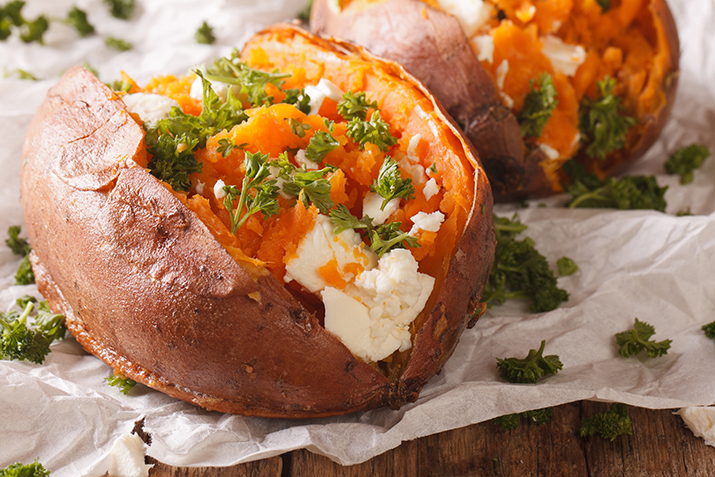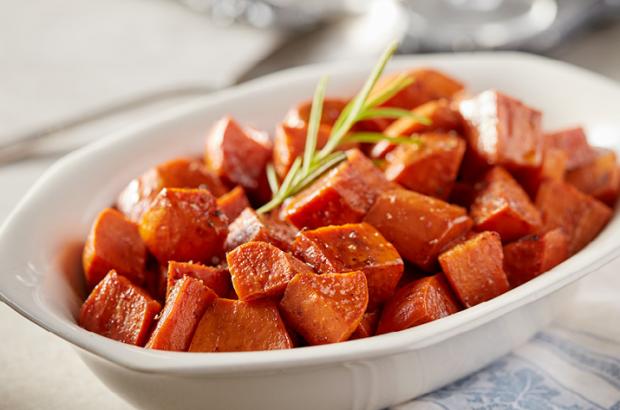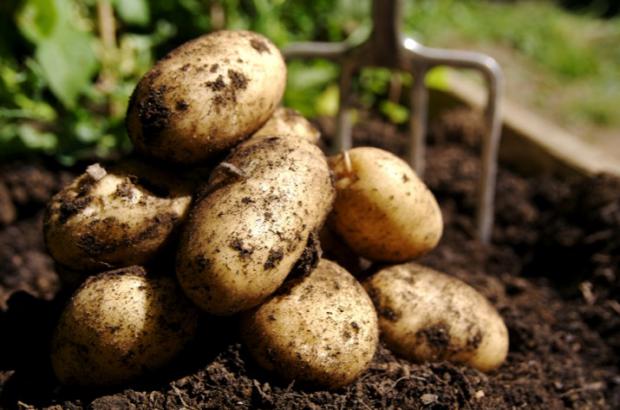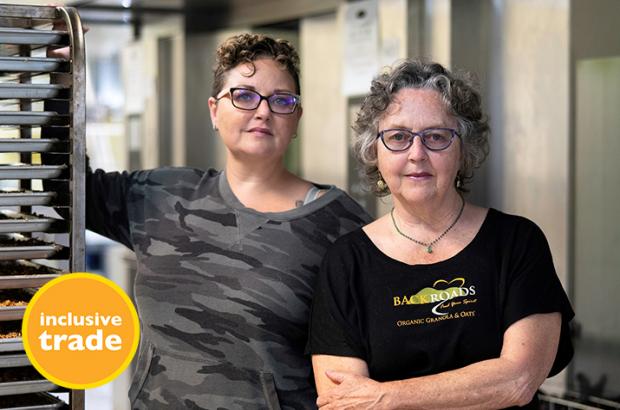Article
Sweet Potatoes Are Back!

Fall is sweet potato time, which makes me very happy. The sweet potato is one of my favorite vegetables and often my dinner. I’ve made more meals out of sweet potatoes than I can count, and I mean really simple ones: a sweet potato with tangy goat cheese or a pool of melting butter, smoked salt, plenty of pepper. That plus a salad is a frequent winter meal. I’m relieved to know that sweet potatoes are considered nutritional powerhouses because I’d be hard-pressed to give them up.
Sweet potato time is also when people start asking about the difference between sweet potatoes and yams, a confusion that persists. The yam is a starchy, dry, tropical vegetable that grows in West Africa, the Caribbean, and Asia. Sweet potatoes grow here and are related to the morning glory. If you see them side by side you can see that they’re different, but the word “yam” has crept into the sweet potato nomenclature not only because of misuse, but also because there are two basic kinds of sweet potatoes. There are those that are “firm” (or dry-fleshed) and those referred to as “soft” (or moist-fleshed.) The firm, dry types were the first to be grown in the US, so when the soft ones were introduced, growers decided to use the word “yam” to distinguish their moist sweet potatoes from the others. This probably shouldn’t have happened, but it did, and the habit still persists. People have candied yams on Thanksgiving and Garnet and Jewel sweet potatoes are typically called yams, even though they’re not.
My local co-op sells five kinds of sweet potatoes at any one time, but sadly, most shoppers see but two or three varieties—and only the soft kinds. So here are the names of some other varieties to look for and try.
Dry Fleshed (Firm) Sweet Potatoes
In general, Asian and East Indian cultures favor dry sweet potato varieties. Since they resemble chestnuts, their cooked flesh can be used where chestnut purees are called for. Being nuttier and less sugary than the moist varieties, I find the dries more versatile: good in a salad, compatible with curry spices, happy to be glazed with honey, ginger, and soy sauce, transformed into velvety custards or sweet potato pies but also delicious roasted. In Japan I’ve encountered vendors selling hot, roasted sweet potatoes as a snack—and what a great snack on a cold day!
- Kotobuki: A long, golden-skinned tuber with dry, straw colored, nutty tasting flesh.
- Hanna: These are short, stubby tubers with pointy ends, slightly darker skin and golden flesh. The chestnut flavor in this tuber is especially rich and good.
- Okinawa or Hawaiian: These tubers are generally small and, with grayish skin, not too attractive—at least on the outside. Their flesh, however, is a gorgeous magenta and the flavor rich and sweet. Try it as a base for ice cream or a custard.
- Yellow Jersey: Grown in the Mid-Atlantic states, these have orange skins and dry, sweet, yellow flesh.
Moist (Soft) Sweet Potatoes
In contrast to the dry sweet potatoes, the soft varieties are intensely sweet—essentially, ready-made desserts (although we do eat them as vegetables). But if you’re going the dessert route, you can simply drizzle molasses and cream into their mashed flesh, or turn them into luscious winter puddings and pies. When making candied sweet potatoes for Thanksgiving, I like to use different varieties, with their skin on and sliced lengthwise and layered so you can enjoy their different shades of orange.
- Garnet: Deep purple skin, dark orange flesh, very sweet, well-balanced flavor. Grown in California, Garnet is usually widely available.
- Diana: Purple skin, orange flesh, moist and exceptionally sweet. Diana was developed to replace the Garnet because of shipping and storage problems due to the Garnet’s thin skin.
- Jewel: Another sweet, super-moist orange-fleshed sweet potato with a coppery, rather than red-orange skin. Jewel accounts for 75% of all the commercially produced varieties and can be held in storage (under controlled conditions; not your home refrigerator) for up to fifty weeks, which explains why it’s nearly always available.
- Beauregard: Similar to Jewel, with purple-rose skin and orange flesh, it matures early, but sweetens only after two months in storage.
Although they look tough and durable sweet potatoes are thin skinned and not great keepers so don’t buy more than you’ll eat in a week. For me it’s hard not to do that so I end up with a lot of cooked sweet potatoes, which end up being very useful, in that mash for example.
As for cooking, baking is a time-honored method. Scrub them, skip any wrappings, and bake in a 375ºF oven until utterly yielding when pierced with a knife, an hour or more, depending on the size. Sometimes very fresh sweet potatoes can leak their sugar jucies while baking, so you might want to bake them on a sheet pan. If you want a sweet potato for supper and don’t want to wait that long, pressure cook them for about 25 minutes. After a fast release of the pressure, check to make sure they’re soft throughout. If not, return the lid and cook another 5 minutes. You can also steam them, either whole or cut into chunks, and you can boil them, although I never like the idea of diluting their flavor.
Not only are these tuberous vegetables very versatile, easy to like and prepare, they offer a lot in the nutrition department. With plenty of fiber, beta carotene, vitamins C and B6, iron, calcium, and protein, sweet potatoes made the Center for Science in the Public Interest's top 10 best foods list---all the more reason for incorporating this versatile tuber into your repertoire.
Check out some tasty sweet potato recipes.













